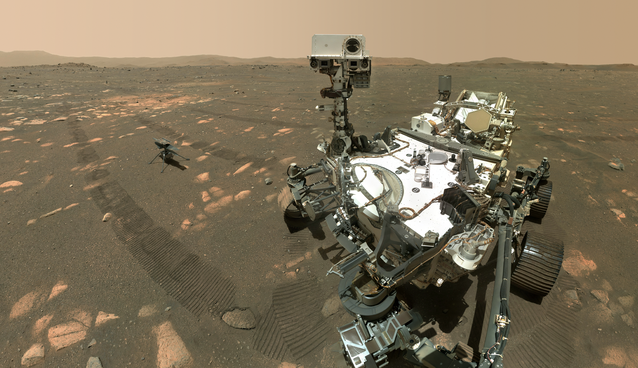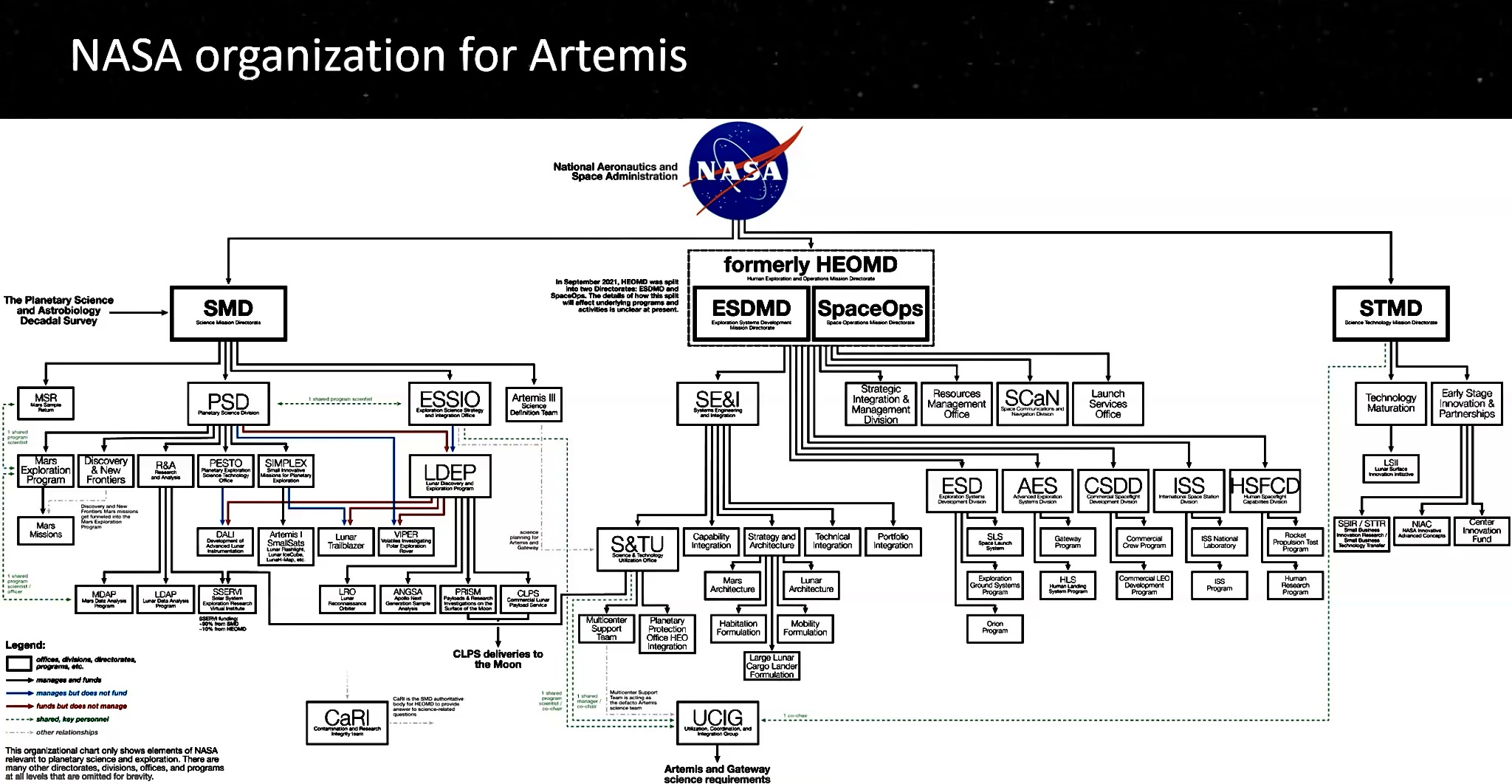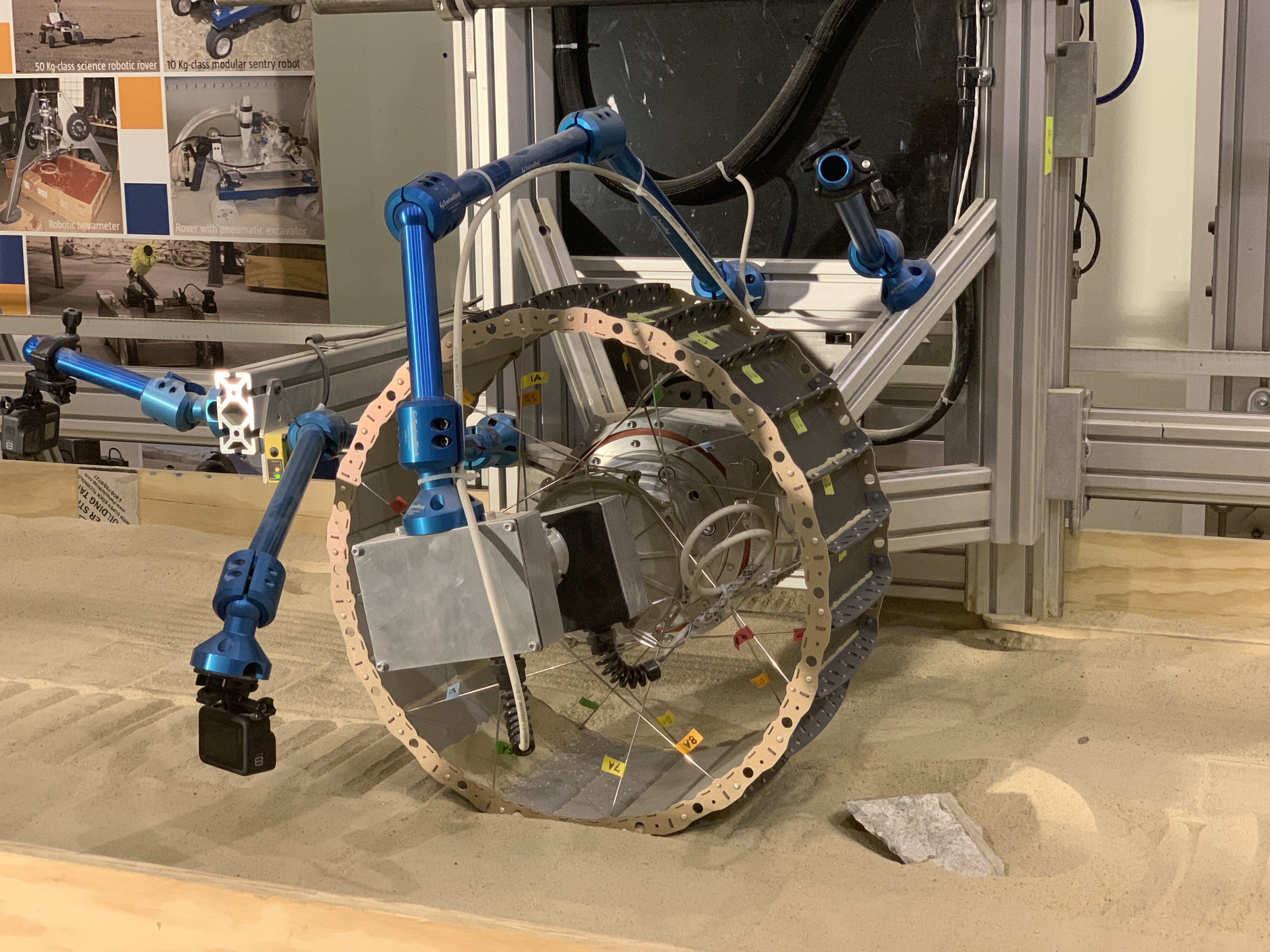Hubble-servicing NASA astronaut urges human-robot synergy for future moon missions
'All robotic exploration is really a human-robotic partnership. How do we amplify the science in this human-robotic partnership?'
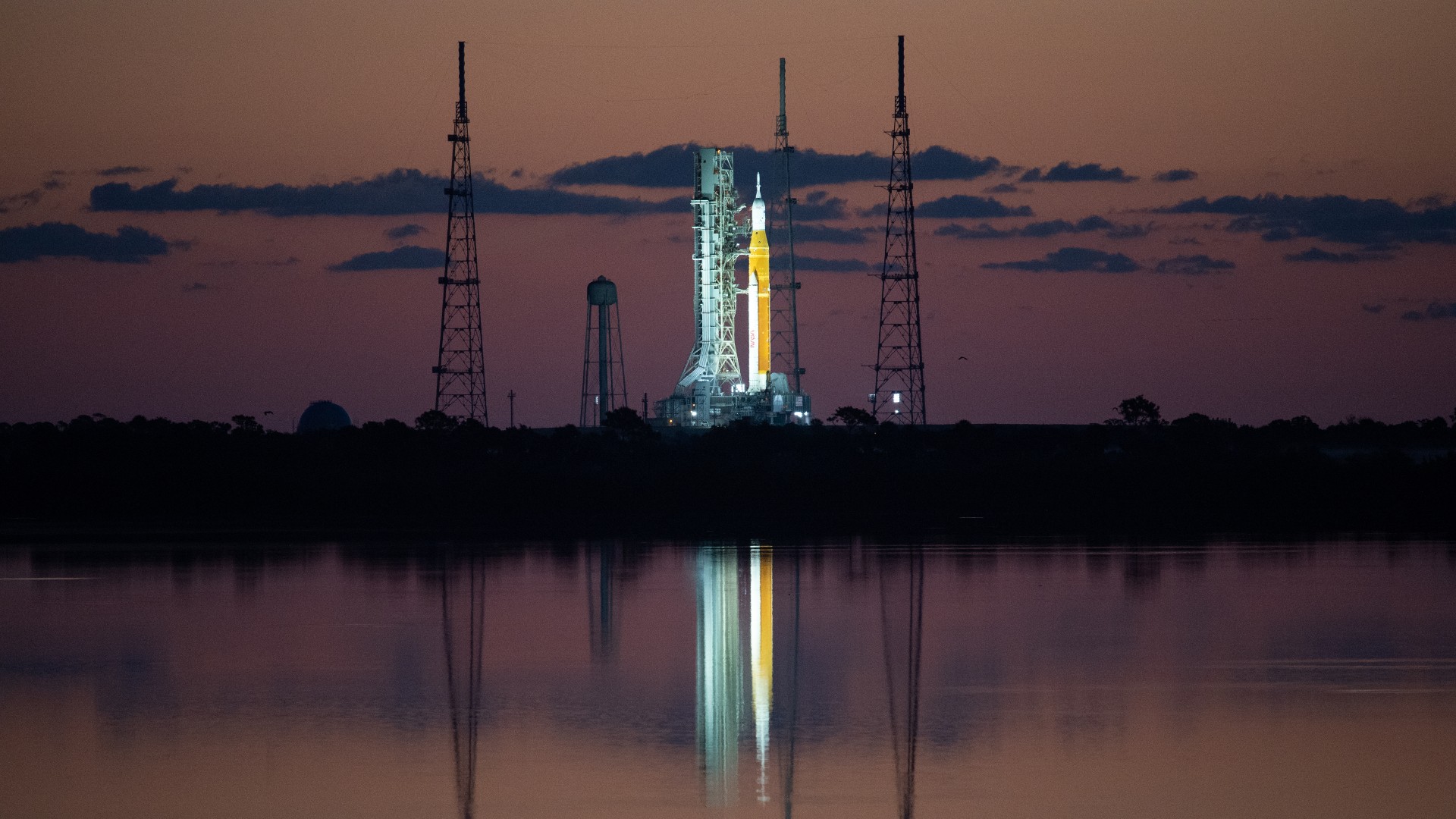
NASA astronaut John Grunsfeld cited some less than stellar findings during a keynote speech in June at NASA's Kennedy Space Center (KSC) Visitor Complex, says waiting to integrate science objectives directly into foundational mission hardware prohibits our exploration potential.
NASA's Engineering & Safety Center (NESC) sponsored a workshop entitled "Unique Science from the Moon in the Artemis Era." The three-day long conference focused on the various engineering obstacles associated with utilization of the lunar environment for possible astronomical science experiments as part of NASA's Artemis missions, like the Lunar Crater Radio Telescope (LCRT), and the challenges faced regarding astronauts' assembly and maintenance of scientific experiments and spaceflight infrastructure.
Industry professionals participated in a schedule of seminars which covered topics ranging from lunar dust and power generation to robotic exploration and human spaceflight, with the goal of establishing a roadmap to develop lunar experiments through to execution over the next few decades.
Related: NASA's Artemis Program
The second day of the workshop, June 8, kicked off with a keynote address from John Grunsfeld, former NASA Science Mission Directorate (SMD) associate administrator and astronaut.
But those are just a few of the titles he has held over the span of the last half century. Grunsfeld was also appointed NASA's chief of extravehicular activity (EVA), and worked as an EVA instructor in the astronaut program. As SMD associate administrator, Grunsfeld managed over 100 scientific missions over the course of his ten years in the position, including the Curiosity rover landing on Mars in 2012. During his tenure as an astronaut, he flew on the space shuttle five times, and served as the lead spacewalker during the final servicing mission to the Hubble Space Telescope in 2009. Grunsfeld was inducted into the Astronaut Hall of Fame in 2015, and retired from NASA a year later. He is an expert in human and robotic space exploration.
Since his retirement from NASA, Grunsfeld's professional life has not swayed from the science and space sector. He is currently part of the steering group for the committee on the Planetary Science and Astrobiology Decadal Survey, a report compiled with input from interdisciplinary scientists to guide NASA's longterm exploratory objectives. The most recent survey was released in April of this year, and outlines twelve key areas of scientific priority, split into three categories: Origin of the solar system, Solar System Worlds and Processes, and Life and Habitability. The document is also nearly 800 pages long.
Breaking space news, the latest updates on rocket launches, skywatching events and more!
Grunsfeld's address, listed on the workshop schedule with the title, "Synergy between Robotics and Human Exploration," was billed as a discussion around the balance and utilization of robotic exploration as part of human research activities on the moon and beyond. "Robots," Grunsfeld claimed, "don't discover anything." Grunsfeld argues that "robots" encompass literally every element of spaceflight and discovery beyond Earth, and draws distinct connections between different ways we use different robots to explore.
"All robotic exploration is human exploration," Grunsfeld said, "I don't even know what it would mean for a robot to discover something. Some futurists can think about that, but in our time frame, all robotic exploration is really a human-robotic partnership in that sense." He encouraged those in attendance to approach their workshop goals with the question, "how do we amplify the science in this human-robotic partnership?"
Grunsfeld discussed the advantages of human vs robotic mission capabilities. He played out arguments for each side, but emphasized that space exploration must rely on both. Grunsfeld listed a number of examples where humans stand at an advantage over robotic exploration, and said the technology needed for upcoming missions still lacks the human acuity for situational awareness, adaptable dexterity, pattern recognition and reactions to unexpected situations. The machines, he was keen to remind the audience, are our tools.
He went on to outline three different approaches for science integration into human spaceflight missions: science-steered, science-driven and science-enabling. He used the early Apollo landings as examples for science-steered approaches — missions with parameters and machinery designed and built for the physical task of landing astronauts on the moon, where science objectives were added after the majority of mission hardware was engineered. In the case of the Apollo missions, Grunsfeld said, it was the politicians gawking at the program's cost and needing to find an answer to the question, "what are astronauts going to do once they get there?"
Grunsfeld highlights the later Apollo missions as examples of the science-driven approach. Apollos 15, 16 and 17 came better quipped with added utility to their existing flight infrastructure, and dedicated scientific objectives paired with extended EVAs. "Those were driven by science," Grunsfeld said, "we had a rover, we had a science plan, and we were off to the races until the public canceled [the Apollo program]." He also referenced Skylab and International Space Station as being effective facilities for science-driven research.
The Hubble Space Telescope, which Grunsfeld flew to space three times to service, stood as the former astronauts primary example for a science-enabled mission approach. The telescope's entire mission is scientific research, and Grunsfeld points out Hubble's intentional design to enable the space shuttle to perform the types of maintenance missions he flew, continuing the human-robotic partnership of discovery.
Grunsfeld acknowledged that each of the three approaches deliver scientific results, but at different rates of return. He stressed the importance of taking the advantages of each into account when considering the workshop's proposals for science on Artemis. "As we look to enabling science at the moon, we should have this kind of context because the first three Artemis missions … that's pretty much baked in," he said in a tone that rang with a bit of stinted optimism.
With the implication that Artemis hardware infrastructure, like the early Apollo missions, limits the research possibilities they can incorporate into the mission, Grunsfeld added "we're hoping we can get a little science [on Artemis], but we have a real opportunity, especially in this workshop, to come up with some ideas, some goals and objectives, and hopefully draft requirements we want to see in [Artemis] to enable some of the science that has been talked about [at this workshop]."
Grunsfeld used this point to pivot his talk to focus on the Planetary Science and Astrobiology Decadal Survey and the report's findings as they relate to NASA SMD's inability to guide foundational mission design for scientific objectives.
Grunsfeld paused briefly before continuing the power point slides of his presentation. "I've been instructed that I have to stick exactly to the text that was in the survey and our presentation to the public," he said, "and I'm pretty limited from talking about all the fun discussions we had to get these findings and recommendations."
He pulled up slides from the decadal survey pertaining to the report's position and findings regarding the scientific opportunities that could be achieved with NASA's existing plans for planetary exploration. Excerpts included the following:
"Human exploration is aspirational and inspirational, and NASA's Moon-to-Mars plans hold the promise of broad benefits to the nation and the world."
"A robust science program provides the motivating rationale for sustained human exploration."
"The advancement of high priority lunar science objectives should be a key requirement of the Artemis human exploration program."
"[The Planetary Science Division (PSD)] should execute a strategic program to accomplish planetary science objectives for the moon, with an organizational structure that aligns responsibility, authority and accountability."
"SMD should have the responsibility and authority for integrating Artemis science requirements with human exploration capabilities."
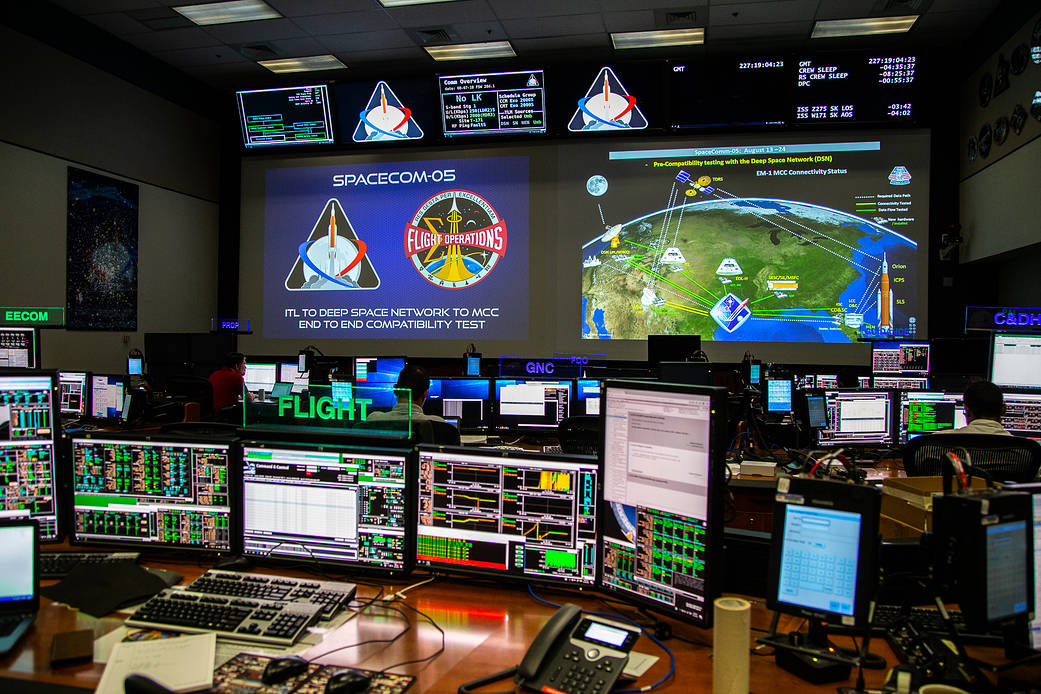
Grunsfeld's position, and what he goes on to point out using the decadal survey, is that SMD does not possess the authority to influence how science objectives are integrated into missions, when, in fact, those integrations within human exploration missions need to begin as early as the engineering design phases. He says taxpayer funds are siloed from the department, and lateral authority structures at NASA leave SMD without a clear path to fulfill its directive.
"We have a big divide at NASA," Grunsfeld explained. "If you want to build a radio telescope in a crater or out in the planes on the far side [of the moon] … or whatever the mission, it would be funded through SMD. But if you want people to have the tools and capabilities to deploy those [experiments], that would be in human spaceflight. And SMD has no authority to direct those activities," he said.
Speaking to a room of industry professionals at the workshop, it's likely Grunsfeld did not feel the need to breakdown the intricacies of NASA's hierarchical structural shortcomings, but in case you don't work at NASA, it goes like this:
The Lunar Discovery and Exploration Program (LDEP) supports Artemis mission partner initiatives including the Commercial Lunar Payload Services (CLPS) program, which is the contract Jeff Bezos and Blue Origin tried suing NASA over in order for a chance at competing. (Bezos isn't part of this, just trying to provide some context.)
LDEP is managed within PSD, and funded jointly with the Exploration Science Strategy and Integration Office (ESSIO). Both ESSIO and PSD exist under SMD on the same hierarchical plane.
The director of PSD is responsible for the general exploration of the moon within the Artemis program, according the decadal survey, which also specifies ESSIO as the planning office for the near and long term utilization of Artemis infrastructure for scientific objectives. However, PSD's participation in that process is limited, which leaves ESSIO with no pipeline or authority to communicate Artemis's scientific needs with the Human Exploration and Operations Mission Directorate (HEOMD), the branch responsible for the mission engineering.
HEOMD was divided into two separate entities in September 2021 — the Space Operations Mission Directorate (SpaceOps) and the Exploration Systems Development Mission Directorate (ESDMD). SpaceOps became responsible for launch and space operations, and ESDMD became steward to Artemis's overarching mission to explore the moon and Mars.
Grunsfeld points out that SMD operates concurrently with ESDMD and SpaceOps, but not in true concert. The different branches, he argued in his keynote, exist in a lateral structure that prevents effective communication and fulfillment of mission requirements.
Grunsfeld provided an organizational branch for the Artemis program to illustrate his argument, but pointed out that the diagram was already out of date. "This is not even the way it exists now. It changes every few months," he said, "which is a good thing because it's slowly migrating towards better coordination. But this is more or less what it looks like."
"Look at this spaghetti … If anybody in the room can figure out where the lines of authority run, I can tell you … they're all dotted lines," Grunsfeld joked. "We have coordination groups, but coordination groups don't have any requirements," he says. "They agree on goals, needs and objectives, but when you want to get it down to where the rubber meets the road, it's what's in the requirements." Grunsfeld believes individuals at the associate administrator level should have the authority to adjudicate implementation over their mission responsibilities.
"We have this artificial skills pipe in the way that we manage science at NASA, and without an integrated coherent strategy, it is unlikely the decadal-level planetary survey science will be accomplished at the moon through Artemis," Grunsfeld said.
His presentation included additional excerpts from the decadal survey, and its findings relevant to the Artemis program:
"The systems engineering approach needed to incorporate science objectives and requirements needs to occur in the early stages of human mission planning and hardware development. The later such integration occurs, the greater the risk of prohibitive expense associated with scientific requirements and/or the exclusion of priority science altogether."
"The organizational structure for lunar science and exploration within NASA at the outset of Artemis has compromised the Agency's ability to ensure that the highest-priority scientific goals will be accomplished at the moon because science requirements have not been adequately provided to or incorporated into the human exploration architecture. As a result, the scientific return from the first human landings in the Artemis program will not be as significant as it could be, and may be minimal."
"Absent an integrated, coherent strategy, it is unlikely decadal-level planetary science will be accomplished at the moon through Artemis. Human exploration can be used to achieve lower-level science goals until Artemis incorporates top-level requirements capable of achieving decadal science priorities."
Grunsfeld read through these findings from the survey as they were listed on his slide, saying before he moved on to the next, "a little bit harsh, but it happens to be true."
Thankfully, the decadal survey also included recommendations alongside its findings for NASA, some of which Grunsfeld used to further highlight the potential for human-robot synergy on the moon. One of the recommendations he included suggests PSD take human exploration into account as a source of augmented support to robotic missions in order to further the decadal survey's long-term lunar science objectives.
One of the recommendations reads, "NASA should adopt an organizational approach in which SMD has the responsibility and authority for the development of Artemis lunar science requirements that are integrated with human exploration capabilities. NASA should consider establishing a joint program office at the Associate Administrator level for the purpose of developing Artemis program-level requirements across SMD, ESDMD, SpaceOps, and other Directorates as appropriate."
A priority mission listed within the decadal survey includes Endurance-A, a lunar rover planned for the moon's south pole. Artemis landing-plans to return the next humans to the moon have long been focused on the moon's southernmost geological region because of its high potential for water ice, which can be mined and utilized to create, well, water … as well as a myriad of other resources useful in space exploration.
Grunsfeld uses Endurance-A as an example of the potential for human-robotic synergy in scientific exploration on the moon. He described a hypothetical mission objective on Mars that would take the Opportunity rover 90 days to complete, pointing out that astronauts on the ground would be able to complete the same task within just 4 hours. Artemis astronauts will have the chance to work alongside the Endurance-A rover, which will be capable of carrying up to 220 pounds (100 kg) of samples across more than 620 miles (1000 km) of lunar terrain. Endurance-A will also allow astronauts more diverse opportunities for lunar sample returns.
The latter half of Grunsfeld's address focused on advances in human space exploration, and the advantages of astronauts' abilities when it comes to assembling and manufacturing components in space. He attests that setting up intricate scientific systems and infrastructure is more efficiently performed by human hands rather than robotic automations.
Grunsfeld shared video of one of his Hubble service EVAs, where he demonstrates the intricate repairs he had to perform deep inside the telescope with a specially-made tool for use with EVA gloves. Without the repairs, Hubble would have been rendered inoperable. Instead, Hubble's mission was extended over three decades and is still operational today. The telescope's initial life expectancy was only ten years. "We shouldn't believe that an autonomous 'explorerbot' is just around the corner," Grunsfeld says, adding, "human skills will far exceed robotic capabilities."
He thinks it's important to take advantage of other active space investments while technology continues to improve. Another of the decadal survey findings casts a positive review of SpaceX's Starship, which won NASA's contract for the agency's Human Landing System provider. "Commercial human spaceflight missions to the lunar and Martian surfaces will provide unprecedented payload capacity and potentially offer tremendous opportunities for planetary science," the survey finding reads.
Grunsfeld also discussed the enormous benefit of international partnerships in the Artemis program. The number of signatories to NASA's Artemis Accords is quickly growing, with France adding its country's name to the list in early June. Grunsfeld highlighted additional findings from the decadal survey, which read in part, "international participation in human programs has the benefit of … providing wider participation of scientists, engineers, and the public from different countries and cultures, and enhancing international cooperation in peaceful endeavors."
Grunsfeld wrapped up his keynote with a set of open questions for his workshop audience to consider, including:
"What can we learn from other industries … on how the work mix between human and robotic partners is split out?"
"When is it cost effective to devote crewmembers to running rovers, as opposed to doing EVAs and taking care of the habitat and environs?"
"When it comes to science, do we want to leave science data gathering completely to a robotic system?"
In a slide near the beginning of his presentation, Grunsfeld displayed several images of NASA "robots" in order to establish a broad understanding of the term for his discussion. Some obvious robots included the Mars Curiosity rover and Robonaut aboard the International Space Station. Images of Hubble and the space shuttle's payload bay sat next to a close-up of the ISS's Dextre telemanipulator and the Mars Ingenuity helicopter. Our concept of robots, Grunsfeld says, "goes beyond Lost in Space."
Remarking on the image of Ingenuity, Grunsfeld shared his recollection of suggesting the mission to his space agency superiors, "when I brought [Ingenuity] to NASA management … they said, 'well, you can't fly a helicopter on Mars!' and then I said, 'we can certainly try it!' and they said, 'no, you can't.' Um, well, it's been extraordinarily successful. Almost twenty-nine times or so we've answered that question. We can fly rotorcraft on Mars and send back some really exciting images."
Grunsfeld channeled a similar enthusiasm into the end of his address, stressing to his audience the precipitous need to determine science requirements for Artemis missions up to a decade away. He closed his talk, saying, "my charter to all of you the rest of the afternoon and the breakout sessions tomorrow is to be talking about what hardware, what operations, what tools might be needed to enable some of the missions that we're talking about."
Follow us on Twitter @Spacedotcom or on Facebook.

Josh Dinner is the Staff Writer for Spaceflight at Space.com. He is a writer and photographer with a passion for science and space exploration, and has been working the space beat since 2016. Josh has covered the evolution of NASA's commercial spaceflight partnerships and crewed missions from the Space Coast, as well as NASA science missions and more. He also enjoys building 1:144-scale model rockets and human-flown spacecraft. Find some of Josh's launch photography on Instagram and his website, and follow him on X, where he mostly posts in haiku.
